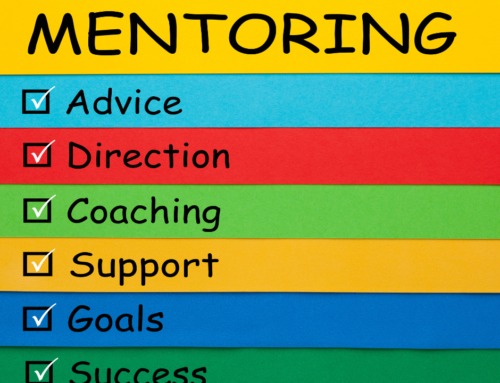The Code to Success Was In My Pocket
We build respectful workplaces on purpose.
The other day I bought a new rain jacket from Mountain Equipment Coop, a popular outdoor equipment store in Canada. It is a Gortex jacket, the first one I’ve ever owned, and something I definitely have needed with all of the wet weather we have had in British Columbia lately.
I remember the saying, “No bad weather. Just Bad Gear.”
In the pocket of the jacket, I found a fold-out card created by the company that designed and built the jacket, RECCO. I unfolded the card to see what they thought to include and discovered an easy-to-understand plan for how to prepare for the backcountry and what to do in order to safe. A good portion of the card was taken up talking about avalanches. The reader is advised of the warning signs to be aware of and lots of information on good preparation disciplines.
Reading the card, I learned a great deal about avalanches and the art of rescuing yourself and others. Did you know that if someone is buried beneath 3 feet of snow, that means that 1 ton of snow has to be dug out to rescue the person?
Why am I sharing this with you?
Well, it got me thinking about our workplaces, which often look calm and pristine when you first glance at them, but ‘bad weather’ can arrive very quickly, just like the backcountry. I think we need to build respectful workplaces ahead of time – using a good preparation strategy to avoid calamity.
If we are wearing proverbial flip-flops and a t-shirt, then we are going to have a problem staying safe. But if we are well-equipped with tools and resources we increase our chances of survival. Better yet, we can prevent problems in the first place!
It all starts with proper planning before the weather turns on us.
How to Build Respectful Workplaces – Design a Code of Conduct
Our clients tend to fall into one of two types of workplace conduct scenarios.
Those clients who are wanting to work with us proactively (before any possible bad weather arrives) and those who are needing to work with us because of a workplace issue. Oftentimes and more seriously, for recommendations at the conclusion of an investigation. One could think of them as folks looking for emergency assistance while already in the backcountry without the proper gear.
In our work delivering Respectful Conduct in the Workplace workshops to organizations, we often encourage workgroups to come up with their own Code of Conduct or Civility Code. This would be akin to having a plan before heading outside.
Interestingly (but not surprisingly), no matter what the industry or where geographically the business is located, these Codes (or Charters) all contain extremely similar commitments. Humans everywhere have the same basic desire for how they want to be treated by others.
The objective of the exercise is to demonstrate to employees that while they define what behavior matters to them, others are hoping and defining the same behavior be displayed to them. Of course, the next step is defining an accountability protocol for how we ensure each individual embodies that code.
How Will We Resolve the Disputes – Planning for Success
Part of that Code also includes an understanding of how disputes will be resolved when people do not agree, or someone does or says something that strains a relationship.
Don’t that everyone knows instinctively how to be civil. There are those people in every workplace who have never learned the basics of respectful behavior.
Here is a list of the – Top Ten Items Provided for Codes of Conduct.
- We greet and acknowledge each other
- We say please and thank you
- We acknowledge the impact of our behavior on others
- We welcome feedback from each other
- We are approachable
- We are direct, sensitive, and honest
- We acknowledge the contributions of others
- We respect each other’s time commitments
- We address incivility
- We treat each other equally and with respect, no matter the conditions.
Could this be something that once developed, is printed up and given to every new employee as part of the onboarding experience?
Do not rely on someone finding it in their new coat pocket; this requires proactive planning.
Have conversations about the sort of behaviors that go along with each item. Let people clarify and ask questions and be prepared to give examples of what it looks like or sounds like to behave a certain way.
What Behaviors Are Not Welcome
There is another conversation equally as important. We define what behaviors are not mutually beneficial in our workplace. We call them risk-taking activities but they are essentially little moments of incivility. If they happen in one-ff incidents, they don’t cause much damage. But if they become routine acceptable behaviors they can cause enormous problems.
The Longer List
- Neglect to say please and thank you
- Use email when face-to-face communication is needed
- Take too much credit for collaborative work
- Email or text during meetings
- Keep people waiting needlessly
- Talk down to others
- Delay access to information or resources
- Use jargon even when it excludes others
- Pass the blame when you’ve contributed to a mistake
- Spread rumors
- Belittle others non-verbally (roll eyes, smirk, etc.)
- Shut someone out of a team meeting
- Pay little attention or show little interest in others’ opinions
- Don’t listen
- Show up late or leave early without explanation
- Insult others
- Fail to acknowledge
- Make demeaning or derogatory remarks to someone
- Take others’ contributions for granted
- Forget to include others
- Speak unkindly of others
- Write uncivil or rude emails
You see, we should not only have a list of things to do but we need a list of things not to do.
Just like the little card that I found folded up in my new coat pocket.






